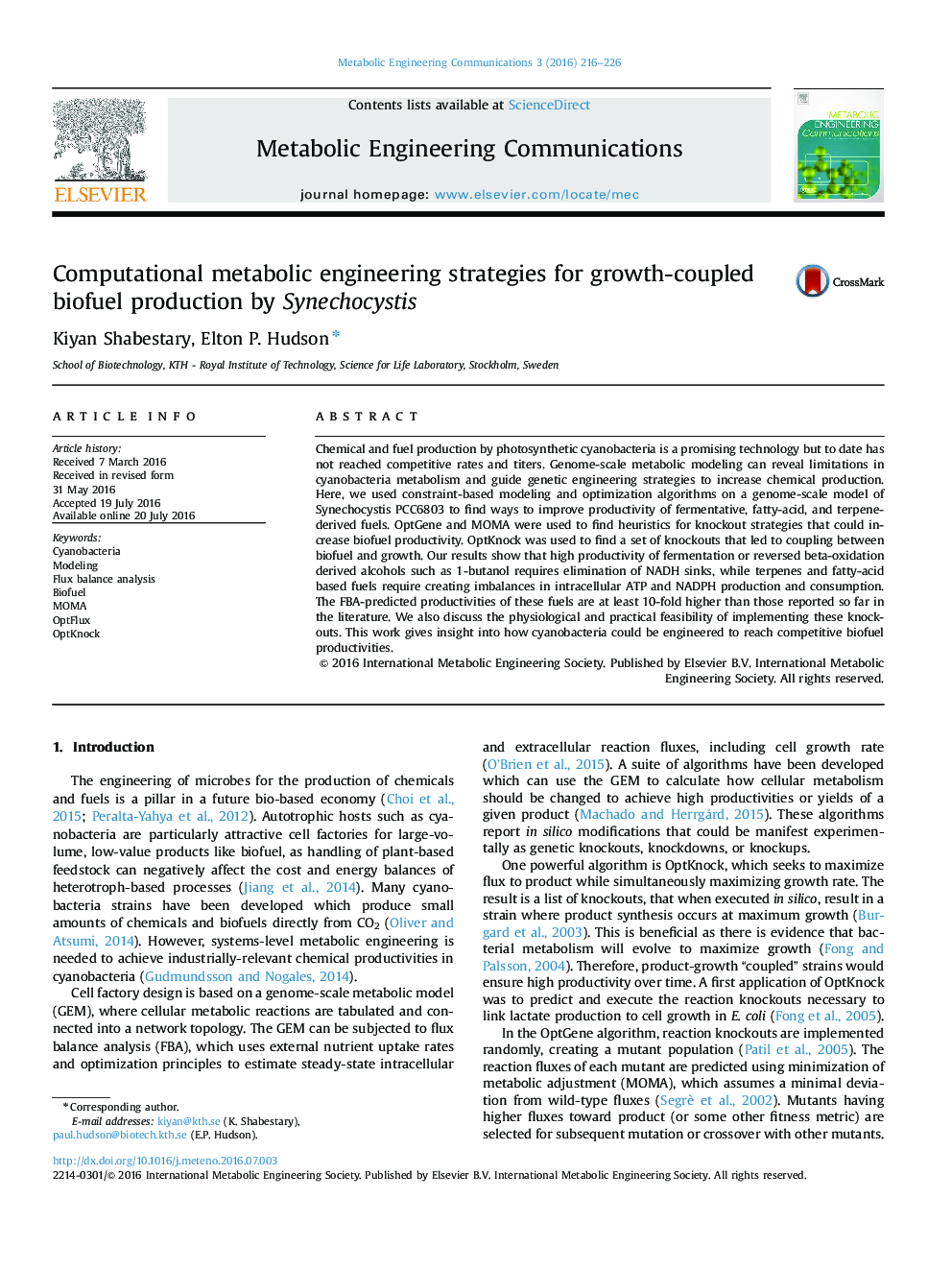| کد مقاله | کد نشریه | سال انتشار | مقاله انگلیسی | نسخه تمام متن |
|---|---|---|---|---|
| 571854 | 1452604 | 2016 | 11 صفحه PDF | دانلود رایگان |

• Model-derived knockout strategies to couple growth and biofuel in Synechocystis.
• Alcohols by reverse beta-oxidation require knockout of many NADH-reactions.
• Fatty acid and terpene derived fuels require alteration of ATP and NADPH consumption.
Chemical and fuel production by photosynthetic cyanobacteria is a promising technology but to date has not reached competitive rates and titers. Genome-scale metabolic modeling can reveal limitations in cyanobacteria metabolism and guide genetic engineering strategies to increase chemical production. Here, we used constraint-based modeling and optimization algorithms on a genome-scale model of Synechocystis PCC6803 to find ways to improve productivity of fermentative, fatty-acid, and terpene-derived fuels. OptGene and MOMA were used to find heuristics for knockout strategies that could increase biofuel productivity. OptKnock was used to find a set of knockouts that led to coupling between biofuel and growth. Our results show that high productivity of fermentation or reversed beta-oxidation derived alcohols such as 1-butanol requires elimination of NADH sinks, while terpenes and fatty-acid based fuels require creating imbalances in intracellular ATP and NADPH production and consumption. The FBA-predicted productivities of these fuels are at least 10-fold higher than those reported so far in the literature. We also discuss the physiological and practical feasibility of implementing these knockouts. This work gives insight into how cyanobacteria could be engineered to reach competitive biofuel productivities.
Journal: Metabolic Engineering Communications - Volume 3, December 2016, Pages 216–226